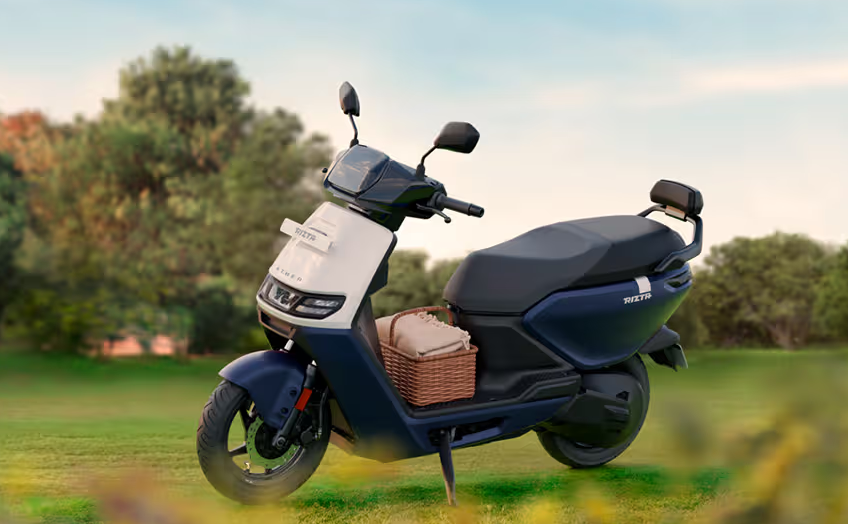Mumbai: The task of christening Ather Energy’s third R&D centre as ‘The Juggernaut’ was not difficult going by what Swapnil Jain had to say.
“Probably one of the quickest decisions I have made. Why The Juggernaut? Because the equipments here are meant to be powerful, relentless and push every vehicle and component to its performance linnets,” elaborated the Co-founder and Chief Technology Officer on his Linkedin page earlier this year.
In a subsequent interview at Ather’s Bengaluru corporate headquarters, Jain told ET Auto, “We have invested heavily on the testing centre because it represents your brand. You cannot take shortcuts on that front. So we have, in some cases, even gone overboard with testing.”
With the new facility, two things have been achieved: expansion of capacity with new products coming in and, two, a constant effort to increase the speed of validation. “So it is one thing to say that you want to build quality products and you want to be thorough with your testing. But that does not mean that your products have to come out every six years,” he said.
Some of our peers who may look like they have done it faster bought the technology and then did the value engineering whereas we built the entire organisation from scratchSwapnil Jain
Keeping up with the pace
In today’s world, that is not going to happen. After all, when people are expecting a new phone to be launched every year, companies like Ather need to catch up with that kind of pace. It calls for a relook at how the entire product development happens of which a large portion comprises testing. “So you would rather figure out how to test faster and more efficiently so that you can get all the issues which you want without spending as much time. And this means that you are thorough and fast,” said Jain.
Read more: Bajaj, Ather, TVS to cut output amid rare earth magnet shortage on China restrictions
On the other hand, if “you don’t do that at some point of time”, business priorities will take over and “you start cutting down” on your testing and validation requirement. As business pressure increases, it is very important to get some of these things in place so that “your testing time” does not increase or actually decreases so that “you can be thorough but fast”.
Jain reiterated that Ather had always believed in building products faster since the time of its inception. In its early years, the tendency was to be extra cautious. It was not about seeking perfection but just being cautious because by the end of the day “we were an OEM building a product for the first time in the market”.
Cautious approach
It was, hence, quite natural to err on the side of caution since the founders, Jain and Tarun Mehta, did not want to be in a place where they would become overconfident and things went south. “As our confidence on some of these things increases, then the caution is not required,” he said.
One of the other reasons Ather has been able to speed up product development is data. Its vehicles on the road which constantly send data have “immensely improved our understanding” of what happens in the field which means that “we can be a lot more confident and do not have to over test or over-engineer”.
Electric motorcycles can be really fun because a motorcycle by itself has a fun aspect to it and on top of it you like put a electric powertrain and the fun element just quadruplesSwapnil Jain
While there are some people who think the company took nearly six years to develop its debut product, they forget that it is the only startup which built everything from scratch. “Some of our peers who may look like they have done it faster bought the technology and then did the value engineering whereas we built the entire organisation from scratch,” elaborated Jain.
With limited manpower in the initial years, real product development happened when “we had the real money and the real set of people to do it”. For the first generation of the product — the battery, the battery management system, the entire algorithms, the dashboard — all of this was being built from scratch by a young set of engineers.
Read more: Ather Energy launches Rizta S with 3.7kWh battery pack at ₹1.37 lakh
Preparing the foundation
“And even today, our first generation of products are quite robust even after seven years. It took a long time to build the technology platform and the organisation itself,” he said. From Ather’s point of view, there was always a plan in place in terms of getting the foundation right before scaling up.
So even today, the mantra is to steer clear of things which will not sustain the company in the long term. “We just want to be sure that we do not take a decision today which will bite you five years down the line and sort of weaken the foundation of the organisation,” added Jain.
Instead of waiting for perfection on Day 1, the idea is to get something which works best at the point of time and keep improving. “It could be cost, it could be quality, it could be manufacturability, it could be anything. We do not wait for perfection because it never comes. You have to improve every day,” he continued.
Today, as Ather gets bigger, more time is spent on ensuring that the fundamentals are right because it is easier to control things when small. “But as you grow bigger, somebody is taking a decision which may not be 100% in alignment. So actually, the job is much tougher today to ensure that the basic principles are set right and the culture is being built. So it is a constant, constant move,” said Jain.
Listening to customers
He was equally categorical that Ather would not be “madly rushing” towards market share but, instead, follow a fundamental approach of listening to customers, numbers and do the right things. For instance, the new scooter platform being readied in the new Maharashtra plant is intended to churn out products much faster and suit different customer needs.
“Creating one specific product for one particular customer does not really have an impact. The idea is to build a strong platform and actually instead of hypothesising too much, build those products and put them in the market and see how the customers respond. Instead of theorising too much, I would rather build something,” said Jain.
People are also moving away from more and more family-owned products to individual products. They are also shifting from sitting together in a hall and watching TV to watching the movie they prefer on their phones. If that trend has to be extrapolated, that is something which Ather believes is quite important to be ready for.
“We do not necessarily know where things will go. People want more personalisation and their own niche requirements. We are seeing that in the FMCG space where they are moving away from mass products to specific boutique brands. So automotive may see a similar trend and I think it is important to be ready for it,” continued Jain.
As a country we want to build certain capabilities so that we can become worthy of export and actually start exporting instead of infighting within the countrySwapnil Jain
Aspiration is the key
The key is to build an aspirational product and it is in this department that motorcycles have a certain character while scooters historically have not tried building a lot more aspiration. “But I think that scooters do not have to be just a boring point A to point B commute but a lot more fun and exciting. Apple did not become an aspiration on Day 1, they built great products which people bought and hence it became an aspiration,” he said.
The Ather motorcycle platform, which is also on the anvil, will enable higher speeds, longer distances and bring in a lot more fun. “Electric motorcycles can be really fun because a motorcycle by itself has a fun aspect to it and on top of it you like put a electric powertrain and the fun element just quadruples,” said Jain.
Asked if Indian electric OEMs should collaborate and yet compete in the market on the lines of the Japanese, he replied that the one area with tremendous potential could definitely be in charging infrastructure. The other could be figuring out how a group of OEMs could team up on cells or semiconductors or “something of those sorts which are weak points for us as a country and which impacts all of us”.
Electric 2-wheeler superpower
As Jain reasoned, this was not something specific to one OEM since all are today dependent outside India to get some of these things. The bigger thing is to probably think about exports a lot more. “As a country we want to build certain capabilities so that we can become worthy of export and actually start exporting instead of infighting within the country,” he added.
In Japan, the mantra of collaboration especially in recent times stems from the fact that the domestic market is small and exports therefore become an imperative. ”They do not have an option. If Japan has to succeed, it must export and that is what has also brought companies together. Coming together and figuring out a strategy to export and capture the world is a strategy which you should be going for,” said Jain.
Instead of fighting within the country, what “we can do together” is to speed up product development, improve the supply chain and all of that. “Becoming the electric 2-wheeler superpower of the world is something all OEMs have to start thinking rather than take the rival approach. How do you rival a Japanese company, an European company or an American company, rather than how do I fight with the peer Indian company, should be the way forward,” signed off Jain.


